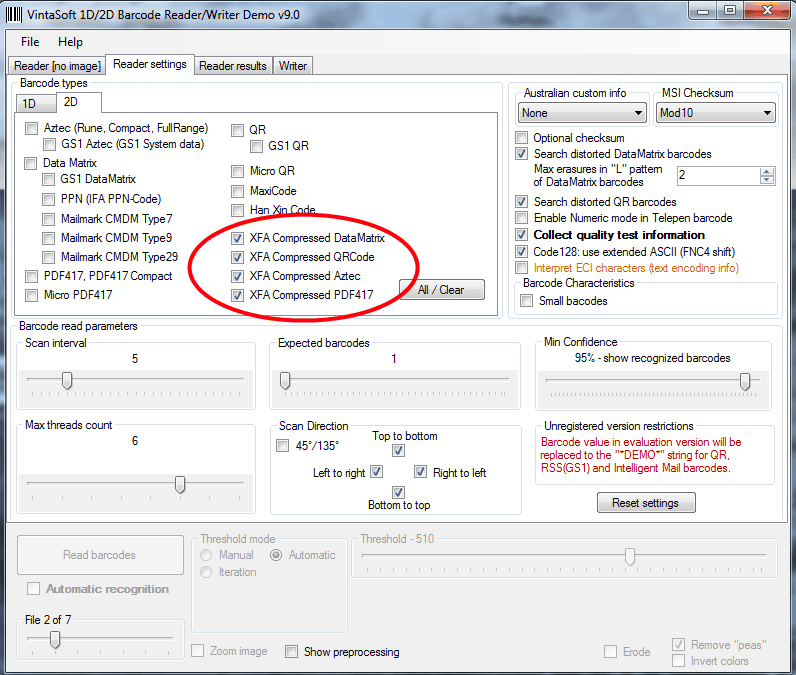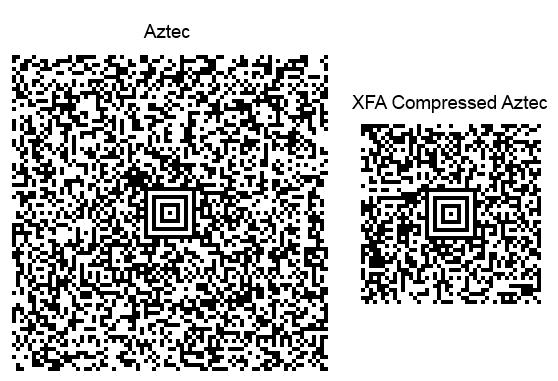can be reduced in size if barcode data will be compressed using Flate compression. The reducing of barcode data size allows to:
- reduce the physical size of barcode - this allows to use less place on the printed surface
- enlarge the cell size of barcode matrix - this allows to decrease the quality requirements for scanning or photographing
- increase the error correction level of barcode - this allows to increase the barcode resistance against a damage
- encode much more data by keeping the initial physical size of barcode
WAY 1: Compress source data and store compressed data in barcode. This is possible because two-dimensional barcodes allow to store binary data (see http://www.vintasoft.com/docs/vsbarcode ... eItem.html class).
WAY 2: * 12 of XML Forms Architecture specification (XFA) describes the rules for encoding and decoding two-dimensional barcodes using "DEFLATE Compressed Data Format" (RFC1951). Such barcodes are implemented in VintaSoft Barcode .NET SDK, and this allows easily create and recognize the barcodes with embedded data compression:
- XFA Compressed Aztec (http://www.vintasoft.com/docs/vsbarcode ... ology.html)
- XFA Compressed DataMatrix (http://www.vintasoft.com/docs/vsbarcode ... ology.html)
- XFA Compressed PDF417 (http://www.vintasoft.com/docs/vsbarcode ... ology.html)
- XFA Compressed QR (http://www.vintasoft.com/docs/vsbarcode ... ology.html)

For example, the same data (a list of URLs) were encoded into two barcodes (Aztec and XFA Compressed Aztec):

The result - the number of codewords in barcode decreased from 528 to 196.
It is necessary to note that Flate compression can increase the amount of data if there is little redundancy or if the data stream is short.